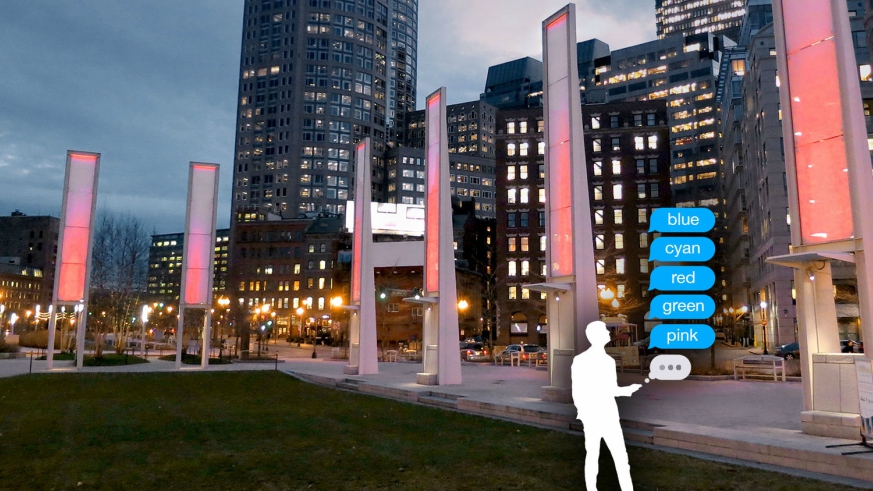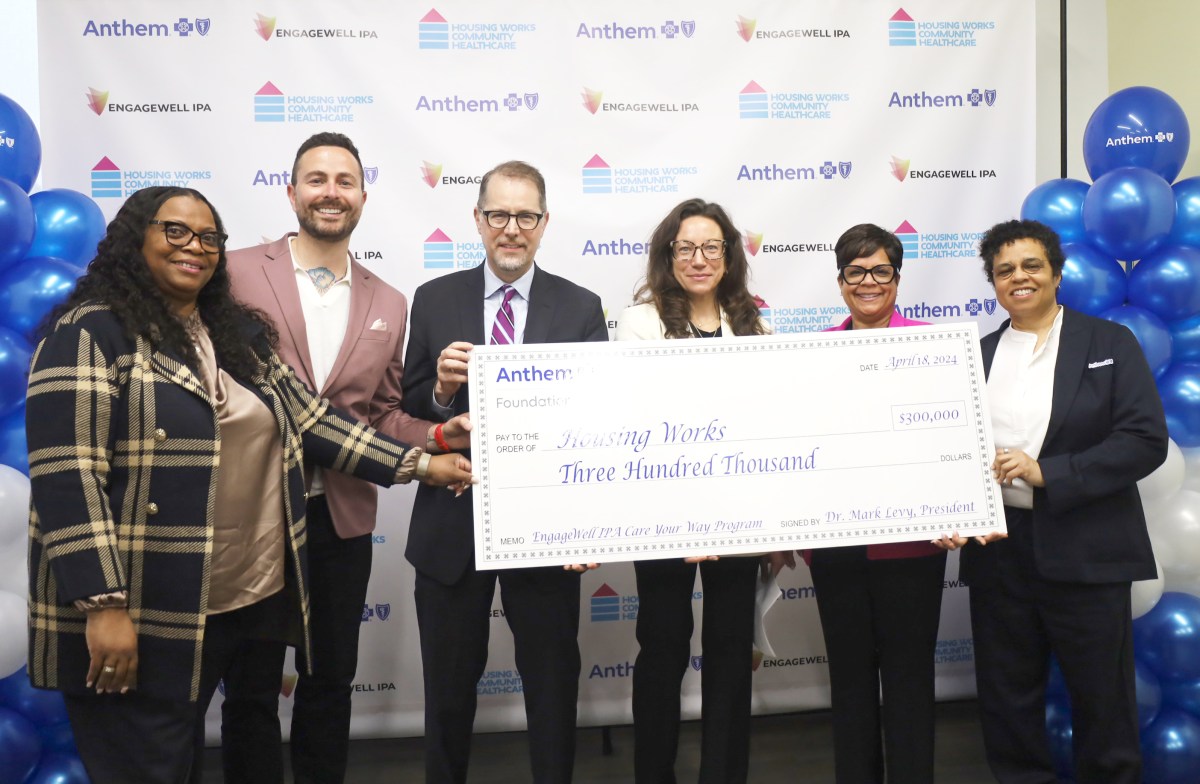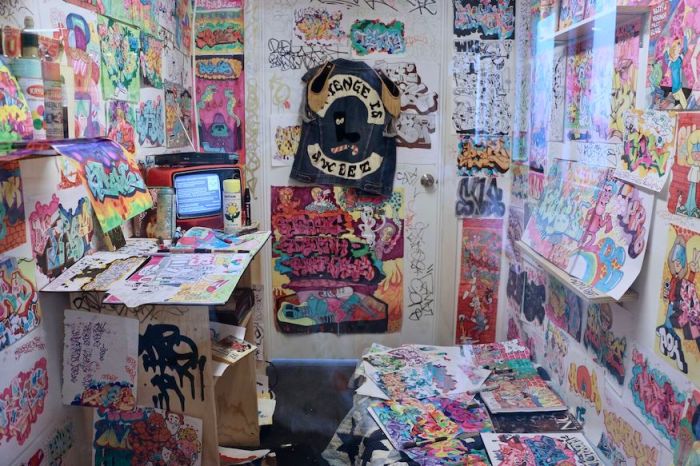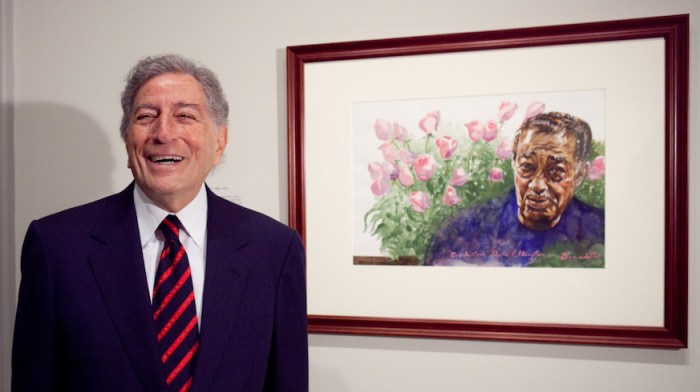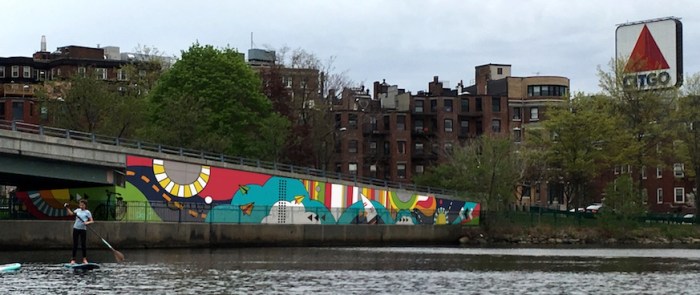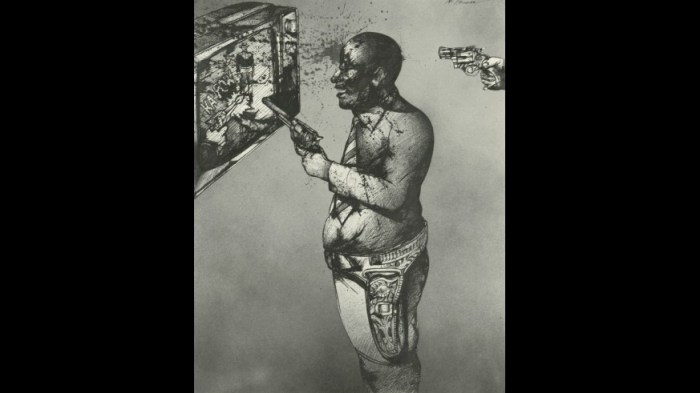Instant gratification is being taken to the next level with the Color Commons 2017 project on the Rose Kennedy Greenway.
After bringing the Z to the outdoor space, the Greenway hopes to attract more visitors with its interactive public art installation. People can now control the Light Blades, a series of 24-foot tall illuminating towers that decorate the park, by simply sending a text message.
“We wondered what it would be like if people could change the colors themselves,” says New American Public Art co-founder Dan Sternof Beyer. “Building lights often change color to reflect a holiday or event, so we built off that while giving people agency over this space.”
Installed earlier this year, the illuminated artwork (the largest of its kind in New England) has received over 12,000 chromatic commands via text since opening. Viewers can test the sculpture’s knowledge of different hues based off of Boston-based comic and “XKCD” creator Randall Munroe’s survey, in which over 200,000 online user sessions determined the 954 most common colors people could identify. Options include ubiquitous colors like “maroon” and “mauve” to more idiosyncratic shades such as “ugly yellow” and “barf green.”
“NAPA is all about making our company accessible to everyone,” says Beyer. “The way this installation works showcases that open sourcing.”
Much of Beyer and his partners’ work involve examining urban spaces and city infrastructure to understand how integrating artwork could enhance a particular venue. For example, a previous piece in Camden, New Jersey, centering on positive inner voices had the public step into a wooden sculpture to reflect emotional warmth, while the metal elements reflected its placement in the cityscape.
Since so much of NAPA’s work is deeply dynamic, Beyer and his team are masters in various disciplines such as engineering, sociology and coding. Various programs also allow them to work with interns, such as recent Tufts University graduate Sydney Strzempko. “I’m working on a data visualization project,” she says, “which will be imbedded in the website and allow people to further interact with the space by sorting out different colors and users.”
With upcoming projects including a radio the size of a truck to hit Boston soon and two huge automated owls “watching” people in Austin, Beyer sees all of NAPA’s work as “manifestations of public curiosity.” His goal is to have each installation serve as a conduit that unites people and leads to true human synergy.
“We’ve had pieces in the past that are more about art being responsive,” Beyer says. “The goal of Color Commons 2017 is encouraging interaction equally between the art, friends and strangers.”

